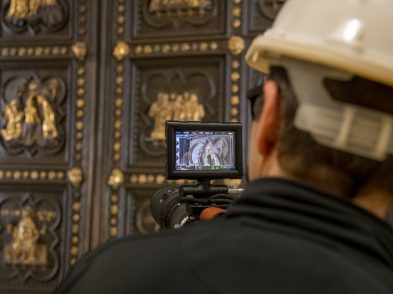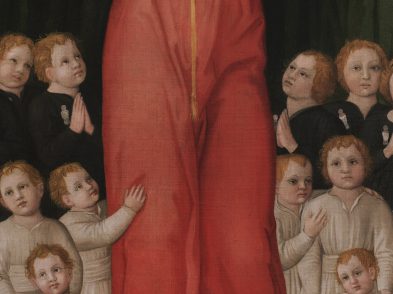In the early days of May, strains of guitars, violins and accordions accompanied by drumbeats, are heard in the streets of Pistoia’s mountain villages. Joyous voices ring out, announcing the official arrival of spring.
When I started writing this column, I was on a four-month journey to Italy to ‘do a bit of research’ and go back to Toronto to write a film script of Ross King’s 2000 book Brunelleschi’s Dome (see TF 149). About two months into this process, I discovered I was on a much deeper mission, both professionally and personally. Events had conspired, leading me to the decision to stay here in order to carry out this mission. It became clear that the writing could not be done remotely. I could not create from a distance. I needed to give the project patience, care and time.
Early on in my research, I met a popular architect and teacher, Massimo Ricci, who has devoted his life to the study of Filippo Brunelleschi—he has even built a scale model of the Cupola. He is a Florentine and his family name appears on the facade of the cathedral. When I met him at the school of architecture, he was very generous with his time.
A large man with a Hemingway beard and gentle eyes, he is a person that will challenge anyone to debate and will often publicly dispute any claims about how the Cupola was built. He vigorously defends his theories, directing robust verbal assaults to his detractors—a practice I have often noticed in lectures here.
After a formal talk, Italians debate. The audience, putting forward different points of view and challenging others, is curious and wants to know more. I have encountered this inquisitiveness often in Florence and it is welcome. How many times have I left a talk in North America feeling that it was all ‘one way’? There is a politeness in the American way, as though we should sit and be schooled while ignoring our own intuition to want to discuss further.
This experience has led me to believe that this same insatiable curiosity, combined with a sense of dissatisfaction with every answer, is what drove Renaissance thinkers. Florentines are obsessed with perfection, beauty and getting things absolutely right. Artisans live this principle every day. They would never show anyone the first version of what they are working on—but perhaps the fifteenth version. I believe this is related to a sense of vergogna, or shame, but it is also strongly linked to a sense of pride in one’s work and being ready to defend it in the face of inevitable criticism.
A piece of advice: adopting this attitude is wise in Florence. A thick skin is a required garment for navigating the city’s streets and the corridors. I first learned this from Ricci.
When I met him, I sat with him and explained why I am here. I told him about my passion for Brunelleschi, my story about wanting to be an architect from a young age and the love for Italy that drove me to become a citizen at 18 (which I could do in Canada as the child of Italian parents). I described how this project has allowed me to channel so many loves—of writing, of film, of architecture and of history—in one important life passion. He listened and looked into my eyes. He let me finish talking and then spoke.
‘David, your passion is obvious, and I am excited about your story. I have to start by being completely honest. It pains me to think that a Canadian has come here to do this. This project should be done by a Florentine.’ I respect Ricci, and, to this day, I refer to him formally as architetto and he refers to me as il canadese.
What a valuable lesson I learned that day! What an awakening about where I had placed myself and the gravity of what I have taken on! Fortunately, I have adopted Ricci’s attitude about things I strongly believe in and have embraced the idea that responsibility is possibility. So, here is a photograph of me, David Battistella, in 2013, putting every cell in my body toward completing this journey.








